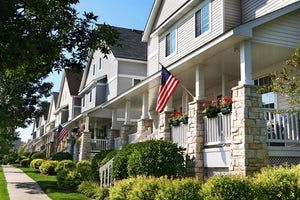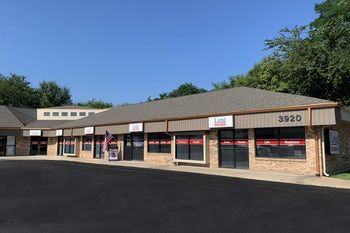
Snow can mean more than a temporary loss of electrical power or inaccessible roads. Unless you prepare for snow, excessive accumulation can also cause a building’s structure to fail or even collapse.
The northeastern part of the United States suffered multiple, major snowstorms in winter 2010-2011 that resulted in numerous building failures. Structural failure can occur because of drifting and sliding snow, inadequate drainage or weight of snow that significantly exceeds design specifications.
KEY FACTORS
Some key factors that may overstress a building include:
- Unbalanced snow load – Drifting and sliding leads to accumulation of different depths in different locations
- Rain on snow load – Heavy rainfall on top of snow may cause snow to melt, saturating snow and significantly increasing the load.
- Roof geometry – Simple roofs with steep slopes shed snow more easily. Roofs with irregularities such as flat roofs with parapets or obstructions or stepped roofs will collect snow in unbalanced patterns.
WARNING SIGNS
Before snow season, inspect your building structure and roof to ensure your facility is not at an increased exposure to snow loading and possible collapse. Also, during a snowstorm, facilities will exhibit warning signs that can be the difference between safely getting through a snow event and experiencing structural failure or collapse. The FEMA Snow Load Safety Guide explains what to look for. Some warning signs of overstressed roofs include:
- Sagging ceiling tiles or boards or sagging sprinkler lines or sprinklers
- Popping, cracking or creaking noises
- Doors or windows that can no longer open or close
- Cracked or split wood members
- Cracks in walls or masonry
- Severe roof leaks
- Sagging roof members, including metal decking or plywood sheathing
If you see any of these warning signs, evacuate the building and have a qualified design professional engineer conduct a detailed structural inspection.
BEFORE SNOW FALLS
Property owners should have a contractor conduct a building inspection and vulnerability assessment before the snow season. After a snowstorm begins, contractors will be in high demand and difficult to find. It is important to have an in-house plan or a professional roofing contractor on retainer to ensure prompt snow removal.
SNOW REMOVAL
When snow removal is necessary, here are some key tips:
- Follow proper OSHA protocol for work on rooftops, including fall protection.
- Confirm that no mechanical equipment is positioned where snow or ice may fall; keep foot traffic away.
- Mark all hazards on the roof with flags, including protrusions, mechanicals and especially skylights that may not be seen under deep snow.
- Avoid using mechanical snow removal equipment or sharp tools, such as picks, that may damage the roof membrane. Use plastic rather than metal shovels.
- Keep snow away from building exits, fire escapes, drain downspouts, ventilation openings and equipment.
- Inspect the roof for any signs of damage as soon as possible after snow removal.
Preparing for snow in advance is the best way to assure that things run smoothly once the snow falls.
This loss control information is advisory only. The author assumes no responsibility for management or control of loss control activities. Not all exposures are identified in this article.










